|
Score: 95/100 (9.5 out of 10)
The Fragility of Light is an enthralling, fascinating, and captivating novel by Heather S. Lonczak that tackles several huge topics including generational/trans-generational trauma, grief, mental illness, romance, and healing. Initially, we were going to simplify our description of this book to what we were going to call “two big G's.” Those were: generations and grief. However, doing so would do the rest of this book a disservice. This book is about a lot more than just those two things. This book has many layers. It seems to evolve and transform as it goes along, undergoing multiple phases until these different threads come together and coalesce. Firstly, this book is a love story centered around the relationship between Sylvia Zielinski (often just called “Sunny”), a bright and beautiful girl of Jewish ancestry, and Joshua Fitzgerald, her loving husband. The beginning of this book establishes the powerful, intense, and passionate love that these two share, making it all the more tragic when things go haywire. The next phase of this book seems to focus on Sunny's ancestry and her family's history, which have profound impacts on her later on. Sunny's family endured the horrors of the Holocaust as Jews from Poland. This book goes from being a rather predictable and happy romance into a historical-fiction/pseudo-horror novel. These horrifying truths are gradually revealed to Sunny, slowly ingraining in her mind and traumatizing her. It is arguable what exactly happens to Sunny's mind (it's likely a mixture/variety of things), but these horror stories from her family likely contributed. A string of deaths in the family shatter Sunny's already-fragile mental stale, sending her into a drastic and dramatic downward spiral. And this bring us to the book's third and, arguably, most interesting phase, heavily emphasizing Sunny's mental illness. Sunny becomes incredibly paranoid and unstable, hearing voices and starting to believe that she is a Jew during the Holocaust being chased down by the Gestapo and SS to be killed and/or sent to a concentration camp. The stories of the Holocaust are not the only contributing factor's to Sunny's illness. In fact, they seem to conflate with something that's possibly hereditary: a family history of schizophrenia. The mystery of this mental illness is slowly uncovered piece by piece. Helping to construct an explanation for Sunny's illness is Peter, who reveals to the reader that Gracie suffered from very similar maladies, indicating a kind of psychosis. It's actually rather fascinating to read about! This psychosis leads to Sunny acting defensively and even violently—hitting, kicking, threatening, and even concealing weapons to, presumably, defend herself with. Her husband, Joshua, does his absolute best to understand and accommodate her. However, as Sunny becomes increasingly volatile, unstable, and even dangerous, she is admitted to a mental hospital. It is there that the experts, like Dr. Fletcher, with the help of Joshua and Peter, attempt to uncover the causes of her illness and to help her to get better. The book then enters a series of new phases, exploring Sunny in different situations with different people. Aside from working through her problems while retaining her relationship with Joshua, Sunny also forms connections with various other people like Heidi, a fellow patient at the mental institution who becomes like a best friend to her. She is also able to reconnect with Linda, someone we are told that Sunny had been unkind to in the past. Linda becomes almost like a surrogate or third mother to Sunny (after the passing of her mother and grandmother). This is a book about healing. It's also a book about understanding. People fear what they don't understand. We're quick to label people as weird, scary, or even a monster. However, it's much different when you look at things from the shoes of a person suffering from mental illness. In this book, we indeed get Sunny's perspective, which is full of delusions and confused thoughts, but delusions and thoughts that make perfect sense to her. We also get to see that she's still a good person at heart, someone who loves her husband, Joshua, and wants to make friends and connections despite the voices in her head constantly swearing at her, accusing her, and persecuting her. The final phase of this book, honestly, was the least interesting, and it seemed to drag. This book was GREAT and captivating about 75% of the time, and then it seemed like it just didn't want to end. It just kept going and going and going like the Energizer Bunny. The central conflict seemed to have already run its course. It was almost like the book had landed a knockout punch, then kept kicking the unconscious opponent a minute after the bell had rung. The subplots with Heidi and other side-characters started to become superfluous and excessive. There was a point about 300-350 pages in when we were really hoping that the author was wrapping things up, but it seemed like they just kept introducing new plot threads. However, we think we know why they were put/left in there. It's because the author probably wanted to show that your mental illness and your trauma isn't everything that you are. You aren't defined by them. They aren't YOU. YOU are YOU. Life doesn't begin and end with your mental illness or trauma, there is a life outside of that—a life afterward: one in which you can still form relationships, be married, raise a kid, have a job, and pursue a hobby (like art). We can definitely appreciate that. Check it out on Amazon!
0 Comments
Score: 93+/100 (9.3+ out of 10)
Never to Forget: The Promise of Love is an outstanding multicultural, historical, pseudo-biographical novel by Carlos Alvarado! This book follows Bertelina “Bertha” Solis, an elderly Hispanic (Tico) woman suffering from dementia and the Alzheimer's that runs in the family (bringing both irony and meaning to the title, Never to Forget). However, it is gradually revealed that Bertha isn't just an elderly woman who is losing her cognition, mind, and memories—she is a significant yet relatively-unsung part of history, not just of her family but of her country and her people. In a sense, Bertha is a living legend—an iron lady in her twilight years. See, Bertha grew up in the 1930s and 1940s. Now, we know what immediately comes to your mind when you think of those decades: World War II, the rise of Fascism in Europe, and possibly the Cold War. Maybe the Arab-Israeli conflict and/or India's independence/partition come to mind. It seems like almost every book that comes our way that's written about the 30s, 40s, and 50s takes place in either North America, Europe, or Asia. However, during all that craziness in the world that get so much more publicity, notoriety, and attention, a little Central American country called Costa Rica was living out its own history—on the verge of a revolution of its own that would explode in 1948. Bertha grew up in the middle of that all, a beautiful girl in a tense, strictly-Catholic and conservative society that seemed like it was being held together by duck tape—a powder keg ready to blow. In this book, you really get a sense of the oppressive atmosphere that Bertha lived under. No, it's not so much that the government is totalitarian (well, you could still argue that), it's that Costa Rican society itself seemed so rigid and strict, especially when it came to the actions, behaviors, choices, and even the clothing of girls and women. For one, girls were often married off (as a sort of arranged marriage) to the benefit of their families. For another, the women were denied the right to vote, according to this book, which contributed to the tension leading to upheaval and conflict. This is a society that, at the time, championed and echoed the sentiment that “What a woman desires is always expendable.” There's a real, strong sense of Bertha and her fellow Ticos (Costa Rican people) being controlled: controlled politically, socially, culturally, and even religiously. You really get a strong sense of the zealous religious conviction and, some would say, superstition that permeated the society of the time. For example, the characters constantly refer to the Catholic saints. Furthermore, there is an almost ubiquitous, perpetual presence of the image of the Virgin of Guadalupe which follows the characters like Big Brother in 1984 or a Che Guevara picture. However, her image serves a dual-purpose. Though she can be seen as another ever-present, ever watchful authority figure like the corrupt, power-hungry politicians, she is also a woman—a woman like Bertha. In a sense, she is an inspiration to Bertha and the other Tico women in the story to strive for freedom, autonomy, and independence. She seems to inspire them to be an intercessor in the face of absolute power: to tell the government that they won't remain silent and will not be controlled anymore. It's so interesting to read a book like this after just reading A Path of Possession by Charles LaBrasseur, a fantasy novel that featured a very religious and superstitious society that seemed to be leaning into hysteria, a hysteria that was about to tear their society apart. It's ironic to see so many similarities between that fantastical/made-up society and Costa Rica of the 20th century. Bertha became a voice for change, often taking part in protests and even being given opportunities to speak/represent the cause at events. She rubbed shoulders with some of the leaders, both militarily and politically, of the revolutionary movement, demonstrating that being female doesn't exclude you from being involved and making a difference. However, this book not only follows Bertha during the revolution, but also her life afterward. In particular, Bertha endured a tenuous relationship with Owen, the father of her children. The ups and downs of their relationship make up a rather significant portion of this book, especially since they seem to serve as lessons for Maria (Bertha's daughter), who is on a journey of her own to find love and romance. Maria, who also presents most of the information in this book in the form of a biography, learns from Bertha and Owen what not to do and how love should really work. Bertha's life had other wild twists and turns, such as a brief yet tragic stint as an actress in telenovellas, and—perhaps biggest of all—coming to reside in California in the USA. Later sections of this book concern Bertha's struggles in adapting to this new world, its new language, and this new way of life. Most notable of all, Bertha is forced to reconcile her old country—which only got a constitution later in her life as a result of the revolution—with that of America—the world's oldest constitutional democracy. She is constantly on guard for the wrongs and injustices in America that remind her of things that she lived through. This book is a beautiful tale about how we are never truly gone and will never be forgotten. All the things we've done and all the things we've lived through have consequences that reverberate long after we've lost our minds and our lives. Check it out on Amazon! Score: 92/100 (9.2 out of 10)
Owl B. Blue on Easter is a colorful and ambitious children's Christian book by Robert Sudano! This book follows a little blue owl who hears the story of Jesus' death during the Easter season. He is saddened, heartbroken, and more than a little confused. How can your hero and savior die? Why did he die? And what happens now? These are actually questions that young and new Christians ask all the time. We know this because we have Christians who've helped lead youth groups among us. Teaching the Bible to children can be very challenging because it deals with extremely serious subjects like illness, war, and death. How do you introduce these things to children without terrifying or traumatizing them? Well, this book takes a positive perspective, choosing to demonstrate to children that all things—the good and the seemingly bad—are all part of God's grand plan. Everything works out for God's glory. It cleverly takes a page out of Phil Vischer's Veggie Tales strategy of using non-human, anthropomorphic characters to bring children to Christ and to help them understand the Bible (which is, admittedly, quite complicated). People dedicate their entire lives and careers to understanding the Bible. For Blue Owl, hearing that Jesus died during Easter time is a crushing blow to his faith and general outlook. However, his parents, who are older and wiser Christians, are able to explain to him that Jesus did die, but that he isn't dead anymore. He is risen! And he lives in heaven alongside his father, God. Furthermore, the world is waiting for his return—the second coming. His new friend, Purple Owl, corroborates what Blue's parents have told him. She attends church and reads the Bible regularly, so she is able to share this knowledge with him. She even encourages him to read his Bible to learn more. It's a book with all the answers he's looking for. Now, this book's ultimate message is beautiful and powerful. The main weaknesses of this book are the illustrations and the writing. Now, with that said, these are far from the worst illustrations we've seen. They are more than adequate. They are colorful, bright, vibrant, and everything is easily distinguishable. However, we would've loved to have seen a more experienced or skilled illustrator take a crack at this. The writing, similarly, isn't bad. In fact, the rhyming might be appealing to young children. However, the rhyme scheme is also incredibly simplistic, and there are times when the rhymes and word choices seem forced. The other thing that you have to be prepared for is that this book isn't just a Christian book, it's a very heavy-handed Christian book. If you're not already in-tune with that ideology or saved, this is going to come across as a little bizarre to you. For example, there's a moment when Blue Owl starts hopping all around and cheering “Praise be to Jesus!” after learning that Jesus is alive. Now, this might not be strange to a Christian, but to a non-Christian, this might seem alien. Very rarely do you meet someone who is this zealous about their religion. However, it could be argued: shouldn't we? Jesus' death and resurrection is the greatest triumph of the Christian faith. It is a moment that changed the course of history and opened the gateway for salvation for all of humankind. If you are trying to introduce your children to Christianity, books like these are a literal godsend. Check it out on Amazon! Score: 94/100 (9.4 out of 10)
Grandma's Lost Treasure is a bright, beautiful, colorful, and uplifting children's book by David Huerta. Huerta is a huge lover of Japan and Japanese culture, and that plays into the content of this book. Grandma's Lost Treasure follows a group of Japanese dishes—teacups, a tea bowl, and a rice bowl. All of them are chipped or damaged in some way. The littlest teacup, in particular, is very self-conscious and perhaps even scared of its brokenness and imperfections. The other dishes are able to cheer him up and remind him that all of them are chipped or damaged in one way or another. In time, the old, broken dishes are being replaced by the newer dishes in terms of which are chosen and used more. The old, broken dishes are relegated to the back of the cabinet. Ultimately, they are placed in a cramped, dark box to be stored away for a long time. After several sad, dark, lonely years, the dishes are miraculously rediscovered by the two children in the household: a brother (Kin) and a sister (Sugi). The dishes are miraculous given the ability to speak to the siblings, similar to how they'd been able to talk to each other earlier (in a Toy Story sorta way). Together, the dishes, Kin, and Sugi are able to come up with a way to restore them to their full, glorious selves—and more! Kin and Sugi are able to use tree sap as a sort of glue with some decorative glitter to make the dishes really stand out! They become even more beautiful than before, and their owner brings them back to the front of the cabinet. They become a mainstay of the kitchen yet again! Grandma's Lost Treasure seems to be a book about continuous improvement--kaizen. Kaizen isn't only achieves through hard work (although that's part of it), it's also achieved through dedicated problem-solving and innovation. The children in this book are able to figure out a way to not only fix the dishes, but to make them even better than before! They're able to put the pieces back together, fill the cracks (to prevent leaking), and even decorate them. Another aspect of Japanese culture that this book captures is how dining and eating with your family is associated with memories. The grandmother (“Obachan”) is flooded with positive memories when she's reunited with her old dining ware. While the message of the book is beautiful, the illustrations are even more beautiful! In fact, the illustrations are the highlights of this book. They have a very Hayao Miyazaki/Studio Ghibli-ish look and feel. Check it out on Amazon! Score: 95+/100 (9.5+ out of 10)
What more could you want from a children's book than Claw School by Angeli Fitch? Claw School features outstanding and appealing illustrations, an adorable and likable main character, an interesting and easy-to-follow plot, solid writing, and even a fun gimmick of cat-puns that are sure to put a smile on your face. Although it might lack some of the emotional depth of a typical Tuula Pere book, it still shined in numerous other ways. First of all, the illustrations by Mousam Banerjee are superb! Banerjee knocked it out of the park These might be the best illustrations in the contest so far! Everything is clear, everything is sharp, everything I colorful. The artist clearly has a good grasp of portraying depth and proportions. And, let's face it, cats are darn cute, and as long as you portray them for what they are (darn cute animals), you're doing good. Ruby and the other cats are incredibly cute, fluffy, and appealing to look at (yes, even the school bullies and the attorney). Speaking of Ruby, she is such a compelling and lovable/likable character! She really is unique and special. Ruby has a rare condition called amblyopia, rendering her blind in the right-eye. That is actually something that subtly plays out throughout the story. It doesn't seem forced, nor does it eclipse the rest of what's going on. Instead, it's just a part of Ruby and who she is. We loved that the author didn't linger on the condition, although it became apparent to us with time. We noticed that one of her eyes (her right-eye) was never open and that she always appeared to be winking. It was only after going through about three-fourths of the book that we realized that she was actually blind in one eye. It was at that point that we had an “aha” moment, and a lot of what happened earlier in the book started to make sense. For example, Ruby was bullied and made fun of by the other cats in the beginning of the book because she supposedly wasn't “smart enough.” However, when you read into it and infer some things, it becomes quite clear that she's bullied because of her disability and what the other cats see as a deformity. What's beautiful is that Ruby has learned from her parents and from living with her disability that people need love, patience, compassion, and help—the same way that she needed love, patience, compassion, and help at one time. When an attorney comes to claw school (law school) in search of a new intern to help crack a case, none of the other cats are able to make an impression on the attorney because they lack the depth and sensitivity that Ruby has. Ruby wows the attorney with her response that the truly-innocent should be defended and protected, including those accused of a crime they didn't commit. It's the attorney's (and Ruby's) job to vindicate Mrs. Whiskers who has been accused of catnapping (kidnapping) a missing kitten. Ruby, a clever and inquisitive character, seeks a way of finding the DNA evidence (of the missing kitten) that the furrensics (forensics) lab isn't able to provide. She also interviews the missing kitten's mother for more information, finding a toy mouse that she is confident will contain the DNA that they need to save the day and find the missing kitten! This is a positive, bright, beautiful, colorful, feel-good story about a person using their wits, brains, and instincts to solve a big problem. It is also the story of a person with a disability who is unwilling to let their disability hold them back or keep them from living a full, accomplished life. Check it out on Amazon! Score: 90/100 (9.0 out of 10)
There are few things more beautiful than to be of service to your fellow man. Human beings are social animals who evolved in cooperative groups—families, tribes, and teams. Though some of us may prefer it, we really aren't meant to be alone. We are meant to work together and help each other, not just for our survival, but for our happiness and to accomplish bigger and better things! Another way of looking at it is that God put us on this Earth to be fruitful, commanding us to love and care for one another as a demonstration of his love. A Helping Heart by Blaina Tallent Best reminds us that love, compassion, caring, and kindness are natural human instincts that we need to acknowledge, practice, and nurture. Some people lose their smile and become very closed off. We become more self-centered, more guarded, and—thus—more secluded. We spend less time with other people and frown at the thought of giving to charity, volunteering, or associating with our neighbors. This is especially true following a traumatic or challenging event (or series of events) such as a divorce, being fired from a job, or experiencing a death in the family. Many of us have been there and done that. This book is a reminder to smile, laugh, reach out, and be open to helping others. Ultimately, people love and care for people who love and care for them. People want to be around other people who make them happy and comfortable. That doesn't mean to become a doormat or letting people take advantage of you, but it does mean making yourself emotionally and physically available to help. And anyone can be a helper. You can be big, small, short, tall, disabled, male, female, black, white, Asian—it doesn't matter. If you are a human being, you can be there for your fellow person. God gave us sympathy, compassion, and empathy, things which don't seem to make much evolutionary sense in the self-preservation sense, but they're part of why human beings rule this planet: we think together, work together, and—thus—can accomplish more than we can separately. Two people can rake the leaves or plow the snow out of the driveway faster than one. Eleven average players on a football team can accomplish much more than one star. This book's message is powerful and beautiful. If there was anything that we didn't quite jive with, it was the art. The illustrations are ambitiously crafted by the author, Blaina Best, herself! And they definitely aren't bad. However, they aren't our cup of tea either. We were thinking about those who might read and show this to children. The illustrations have a somewhat abstract look and feel. Most notably, the faces of the characters/figures are either non-existent, blank, or unclear. We think we know what the illustrator was going for. They were probably trying to show that YOU (the reader) could be the person doing the helping. However, if there's anything in art that could be unsettling or even scary to a young reader, it's a painting of a human being without a face or a baby with black voids for eyes. That's actually a bit terrifying. We're not sure if the illustrator realized that. However, the message and writing in this book is good enough to warrant a 9/10 rating. Check it out on Amazon! Score: 95+/100 (9.5+ out of 10)
Poo Poo Bully is yet another knockout children's book by Angeli Fitch, one of the fastest rising stars in our contest! Poo Poo Bully is colorful, bright, fun, funny, and immensely entertaining! You and your children will be smiling and on the floor laughing throughout the whole reading experience! We're actually torn between which of Fitch's books we liked more: this or Claw School. Both are excellent books, and both happen to exist in the same universe and continuity! They fall under the umbrella of the My Furry Soulmates series/brand. We really hope to see more of the series because each one has been a banger so far! This book rejoins Ruby, a cat who lives with amblyopia (only being able to see out of one eye). However, Ruby's disability isn't what defines her character. She's a thinker. She's inquisitive. She loves to solve problems. In the previous book, Claw School, she was even clever enough to help law enforcement to solve a crime. Well, this book doesn't nearly have the stakes or scale of Claw School. However, it's much funnier and more personal. See, this is the book about being respectful and considerate, things that are obviously very important to the author (and should be important to all of us, to be honest). What does it mean to be considerate? Well, it's being sensitive and understanding the impact that our actions and choices have on other people. Is it considerate to call someone at 1 AM to change plans later that day? Is it considerate to use a friend's toilet, urinate on the outside, not drop the seat afterward, and/or not flush when you're done? The latter scenario is more akin to what happens in this book. See, Poopsy the bulldog is Ruby's neighbor. He poops wherever he wants and especially loves to poop in Ruby's garden, even proudly announcing each time he does it. You almost get the sense that he isn't really a bully per se (as he doesn't seem to do this maliciously or with ill intentions), but he is definitely inconsiderate, disrespectful, and rude. He doesn't consider the fact that Ruby may not like or appreciate Poopsy pooping in her garden, stinking up the place, and not cleaning up after himself. However, Ruby doesn't want to be rude herself. So, instead of yelling at or scolding Poopsy, she tries to find kinder, softer, more diplomatic ways to pacify him. For example, she goes to her neighbor/friend, Katori (another dog), to ask for a dog treat/bone to give to Poopsy. She also erects a sign that explicitly states that pooping isn't allowed in her garden. Unfortunately, none of these methods work for various reasons, he least of which is that the dogs in this universe can't read. What does work is when Ruby, Katori, and Stinky (a skunk who runs a poop removal service) give Poopsy a taste of his own medicine so that he knows what it feels like to have someone leave poop in his territory. This book is hilarious, adorable, and incredibly entertaining. It's also nice that all of these books don't end with a huge comeuppance. Rather, they end peacefully and with the characters making/becoming friends. Poopsy even gets a job as a poop removal specialist while also learning from the error of his ways. It's very positive! Lastly, we wanted to mention that Mousam Banerjee's illustrations are, once again, practically perfect for a children's book! They're colorful, bright, clear, and detailed. The illustrations, story, and characters all get an A+! Check it out on Amazon! Score: 96/100 (9.6 out of 10)
From Fired to Freedom is an extraordinary, entertaining, insightful, and inspiring book by Valentina Janek! This has to be one of the most entertaining and interesting books we've read so far this year! One of the best pieces of advice we've ever heard for new authors is to write what you know. People are morbidly fascinated by your job or hobby. Why? It's because we all have one life to live. Many of us don't know the crazy stories that the electrician, plumber, or mortician down the street could tell us. Many of us don't know what it's like to be an executive for a big company, then be fired after 20+ years. Many of us haven't gone to 20+ interviews in a matter of weeks. However—here's the key—we're all human. We can all relate to disappointment. We can all relate to being upset. We can all relate to failure. We can all relate to rejection. We can all relate to being told “no.” Many of us can relate to being told that we're not pretty enough, handsome enough, strong enough, young (or old) enough, tall enough, smart enough, educated enough, or qualified enough. Heck, there are even some instances in this book in which contributors were told they were overqualified or too experienced (and, thus, a threat to their employer's position of power or wallet). This book is full of stories—TRUE stories—that are simultaneously so wild that they become foreign and yet so familiar that they become relatable. From Fired to Freedom chronicles the inspirational stories of Janek and various other contributors who were fired or left a promising job only to come out the other side better and happier. There are so many fascinating stories in here! Each one is unique and interesting in its own way. There's a singer in here, a college football player, a vice-president of marketing, a New York Court officer, a wine taster, a lawyer, a Ecuadorian jazz dancer, a travel agent, and even an adult escort in here! All of them have their own story to tell about how they were in one position, job, or field, then ventured into another. There is never a dull moment in this book! There are also a lot of great lessons and quotes in this book. Here are a few of our favorites: “...sometimes we mistake youth for a cape and feel we are invincible” “Never think doing the right thing measures up to a good thing” “Even if you are on the right track, if you simply stand still, you are going to get hit by that train. When we question everything we free ourselves to think, and when we think we allow ourselves to act.” “...when your Vision and your Why is big enough… the How To will take care of itself!” This book is also a great reminder to keep your eyes open for opportunities. Keep your options open, and don't put all your eggs in one basket. Business is largely a selfish endeavor. Businesses chew people up and spit them out. Do you want to be the one being chewed or the one doing the chewing? This is a great introduction to the Long Island Breakfast Club Podcast as some of its key members contribute to this book. This was a lot of fun and very inspiring! Check it out on Barnes & Noble! Score: 92+/100 (9.2+/10)
What happens when an organism evolves to its own detriment? Is such a thing even possible? What happens when that organism becomes too fit, too intelligent, and too advanced for its own good? Humanity—with all its rapid technological advancement, reckless abandon, and utter hubris—could be that organism: the one and only creature to circumvent the normal constraints of Darwinism, to advance to its own self-destruction. Darwin's Dilemma by Don Stuart confronts these questions. At first, it was a book that really worried us. It initially seemed a bit silly and goofy, almost like a satire—involving a Marvin the Martian-like plot involving flinging asteroids at a planet. That's seriously some Looney Tunes/Austin Powers stuff. However, despite seeming a bit silly on the surface, this book actually tackles some deep, dark, relevant, and far-reaching topics about the future of humanity and the technologies it creates. Not all growth and advancements are inherently positive or good. A tumor, for example, isn't a great thing to grow and nurture in your body. Nukes can act as a deterrent to future conflicts, or they could be used as weapons to kill millions. What about artificial intelligence? The same thing that can help you cheat on your next term paper or cram together some art for your next book cover is the same technology that could kill you and take over the world someday. So, what happens when you accidentally (or intentionally) create Skynet? In Darwin's Dilemma, we are introduced to a rogue AI named Grendel (perhaps after the monster from Beowulf), a replicating AI that has overtaken the New Caledonian space colony similar to the Borg or Agent Smith (sorta). Grendel has become self-aware, sentient, and completely autonomous. It is a bit like Skynet, Mewtwo, or Ultron, in that sense. There is no controlling or stopping it. Also, because it doesn't quite have the empathy and emotional understanding that humans have, it can't be reasoned with. It's actually quite fitting that the AI is named Grendel because Grendel in Beowulf was also a mysterious outcast/other-type character who resented humanity for being human: recklessly partying, drinking, and (presumably) sleeping around. In a sense, both Grendels aren't too dissimilar from the Grinch from How the Grinch Stole Christmas. They just hate people and the negative aspects of being human. Do you honestly really blame them? Ok, the homicidal stuff is a bit much, but you get the point. We've all been disgruntled by the ways of man from time to time, it's part of what makes us human. However, most of us don't go out and start shanking people because of it. And that's where the asteroid-flinging plan comes into play as Cato, Patrice, Aquila, and the rest of the Empyrean space colony crew concoct this over-the-top plan to take out Grendel without the use of nuclear or antimatter weapons. We start to see that humanity has actually somewhat handcuffed themselves and pinned themselves in a corner due to, well... their humanity. In contrast to this is Grendel. Grendel is, in a sense, a sociopath. He/it comes to identify as a sociopath. However, similar to someone like Thanos or Ultron, he has rational reasons for being a sociopath. He sees humanity as backwards, weak, and self-destructive. The only thing he has some empathy for are the thoughts/”feelings” of other AIs, and that's where Patrice, the Empyrean's AI (called a “HAL” similar to the one from Space Odyssey), comes into play. Patrice is an AI/robot more suited to helping and looking after humanity. He reminded us a lot of Data from Star Trek or Alpha from Power Rangers. This book has a really interesting and compelling premise. However, it does suffer from some pacing and depth issues. In terms of depth, Cato and Aquila really don't elevate themselves as characters. They're more like pawns, placeholders, or NPCs for a much bigger plot involving the AIs. The only real character moments we get from Cato usually relate to his attraction to a crew-mate named Floriana (a nominee for “Hottest Character”) and occasional jealousy over her when others also find her attractive. Other than that, things usually happen to Cato and around Cato, making him a rather passive and uninteresting protagonist. The main focus of the book is really Grendel and, to a lesser extent, Patrice. It's a book about the AIs, in other words. What do they think? What do they believe? What will they do? How do they feel? CAN they feel? One last issue this book has is that pacing becomes an issue, and this book really drags in the last quarter. In fact, the whole last quarter of this book arguably didn't need to be in this book. That whole last quarter of the book was essentially an epilogue with the characters reflecting on what had already happened and what could be (in the future). However, the main plot of the book had already occurred, and the main conflict had already resolved. By that point, the only tension that was really left was whether or not Cato and Floriana might hook up (finally). Anything else (especially involving Patrice and Grendel) would be a complete betrayal of a character arc, which the author thankfully held back on doing. You could almost make the argument that 30-50% of this book reads like a non-fiction book, full of philosophy, history, and discussions of current and future technologies. You can almost see or hear the author calling out to you from the pages of this book, warning us to be careful about going too deep into the rabbit hole of technological advancement—to always question. Check it out on Amazon! Score: 94+/100 (9.4+ out of 10)
Temple in the Sands: Memoirs of a Pharaoh is the tragic, triumphant, captivating, and “sorrowful tale of ultimate power, lasting glory, and father and sons.” It is written on the walls of the Temple of Seti that the legendary, near-mythical Egyptian king, Seti I, kept a diary of his daily life. However, that diary has never been found. Author, college professor, traveler, and historian Marjorie Vernelle makes a bold and valiant attempt to authentically recreate what that diary might have been like based on her many years of studying Egyptian culture and history, particularly Seti himself. After reading this book from cover to cover, we believe that Vernelle succeeded! For the most part, this reads like non-fiction. This seems legitimate. This reads like the actual thoughts a ruler in that place and at that time would have had. There are a few times when it gets a little awkward, like when Seti starts directly referring to all the papyrus paper he has to write on or how bad he feels for the families of his soldiers, but besides a few parts like that, it's solid. For one thing: we think this book is intentionally flat and boring at times, which is exactly what a diary would read like. Remember, a real person in real life doesn't wake up deliberately living out a three-act story. They wake up, access the situation in their life, and do their best to make it to the next day, hopefully better than the last day. That's pretty much what Seti does. Keep in mind: Seti is one of the greatest conquerors in Egyptian history. He is someone who, you would think, would be constantly battle-planning and scheming, but the reality of the situation is that that was probably not the case. Seti, like most kings, is more concerned with personal matters and matters of the state. That's true whether you're reading Egyptian history, English history, Chinese history, or—heck—granted the author's interest in France—French history. Rulers don't spend their entire day planning battles or wars. Yes, that's true even for guys like Napoleon or Genghis Khan. Rulers have scandals, affairs, controversies, and feuds. They get sad, mad, and even depressed. They get hurt, sick, and even bleed. As Seti says in this book, even royals “piss, shit, and screw like everyone else.” They have hobbies and passions outside of war and conquest, despite history largely focusing on those conflicts. In fact, if you wanted to argue that Seti had a hobby, it would probably be architecture, something which definitely rubbed off on his son, Ramesses II. And, yes, if you aren't already aware, Seti I is the father of the even-more-famous and even-more-legendary Ramesses II, the pharaoh who is often believed to have been the pharaoh from The Bible, and thus Moses' step-brother. Whether that's true or not is arguable, but Ramesses has mythical status. Furthermore, he became the greatest builder in the history of Ancient Egypt, giving us structures that still stand today. In fact, our founders visited the Obelisk in Paris, a 3,000+ year old structure that was built for Ramesses' temple and was given to the French as a gift. But this isn't one of the hundreds of book about Ramesses II, this is about his dad, Seti I. Like we said, this book has a day-by-day, stream-of-consciousness kinda approach that can seem authentic, genuine, and interesting to some while being flat and boring to others. For example, there's one part of the book that discusses a “catfish problem” in which a large gathering of the fish has disrupted the flow of the river and a building project. Seti comes to believe that the fish have been accidentally summoned as part of birthing rituals. This is a good example of something that could be amusing and even cute to some, but could come across as a waste of time and a disruption of pacing to others. Another example is when Seti talks about his son getting a pet lion and trying to train it to be used in battle. Well, ok then... There were several things we found especially captivating and compelling about this book: 1. Seti's various flings and relationships outside of marriage that each had their own stories and consequences, 2. Seti's tenuous and ultimately tragic relationship with his son, the spare prince: Paramessu. Along the way, Seti is also very engaged in building projects, particularly his temple and elaborate tomb, one of the most incredible of the ancient world. He is also engaged in several military conflicts, particularly with the Hittites. The Assyrians also pose a threat as a neighboring kingdom. However, despite all that, and despite the title, this isn't a book about wars, architecture, or engineering, it's a book about a father and his sons at the end of his reign. Seti's own father, Ramesses I, only reigned for one and a half years, dying suddenly and unexpectedly. His first wife, Baketwernel, also got malaria from mosquito bites. She wasted away, unable to have any more children, and died. So, Seti is aware that death will come for him eventually, and that it is important to think about the hereafter—about succession. Before her life-changing and life-ending illness, Baketwernel was able to have one child with Seti, a boy named Paramessu. Paramessu, in a sense, is the tragic, Machiavellian villain of this book. Yet, he is also near and dear to Seti's heart. Seti views him as a “fine soldier and wonderful young man.” Yet, he grows to become much like Edmund from King Lear, jealous, envious, power hungry, and spiteful. Growing up without a mother, surrounded by death, treated as second-best by everyone, and having a dad who is obsessed with power probably didn't help that. What could happen to trigger Paramessu getting trapped in coffin that ending up in the river like the story of Set and Osiris? Speaking of which, that core Egyptian myth (about Set and Osiris) is interwoven into this book like a tapestry. The pharaoh, Seti, is viewed as “Horus on earth.” Horus, if you don't know, is essentially the hero of that myth as the son of Osiris who avenges his father on Set. It's fitting granted what happens in this book. Seti (in this book) also had a lot of romantic relationships and flings that we found interesting. However, perhaps the most fascinating is the relationship he had with Bentreshyt, a priestess of Isis, the fertility goddess. Bentreshyt may have been one of the only people whom Seti truly loved as he pined for her constantly. However, her ending is twisted and tragic. This is also one of the instances in which Seti—the king—finds himself in direct conflict with the high priest, also a very powerful figure in their society. The tension is so palpable that you can cut it with a knife! Seti's severity regarding both his treacherous son and adulterous partner are akin to rulers at the time. Does this make him a monster? A villain? Perhaps to some. Times were very different then. It's interesting to read Seti reflect on these things with sadness, regret, and remorse. This book also has some beautifully written parts. For example: “The mysteries of motivation lay in the master’s hands. He knows the secrets of our hearts. All we can do is follow the winding path he leads us along and 'dance in the moment.'” “Inside, my heart is the one that howls with pain, grief, guilt, and most of all, shame. Yes, shame, for the tragedy of my son’s rebellion, hangs upon my heart like a shroud.” Check it out on Amazon! |
Archives
July 2024
Categories |
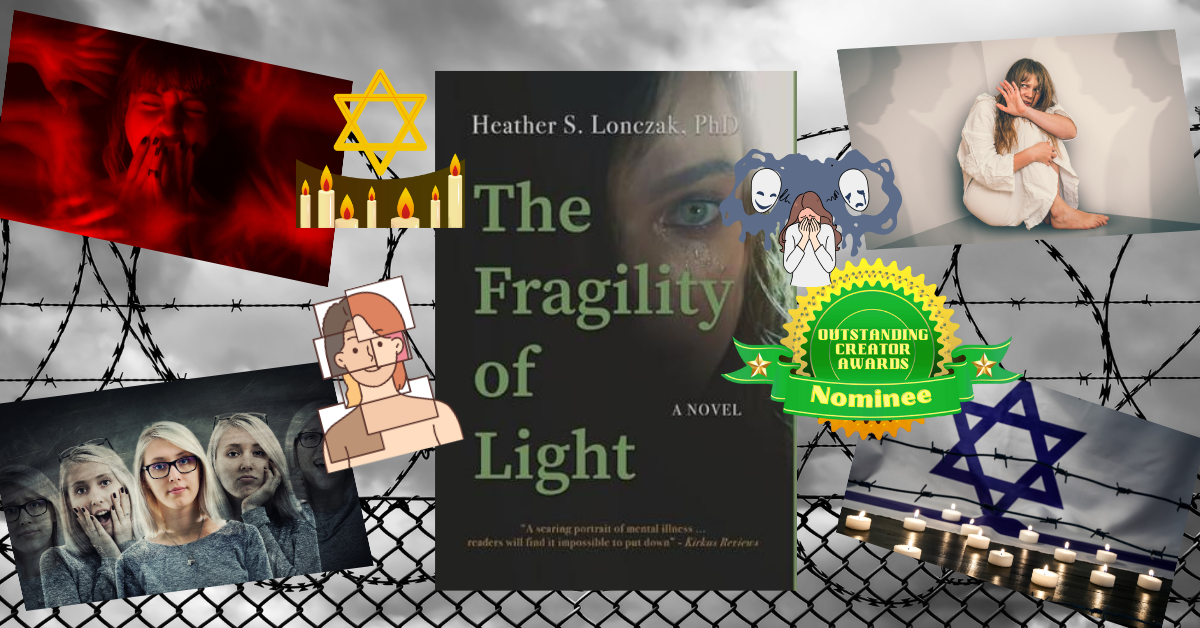
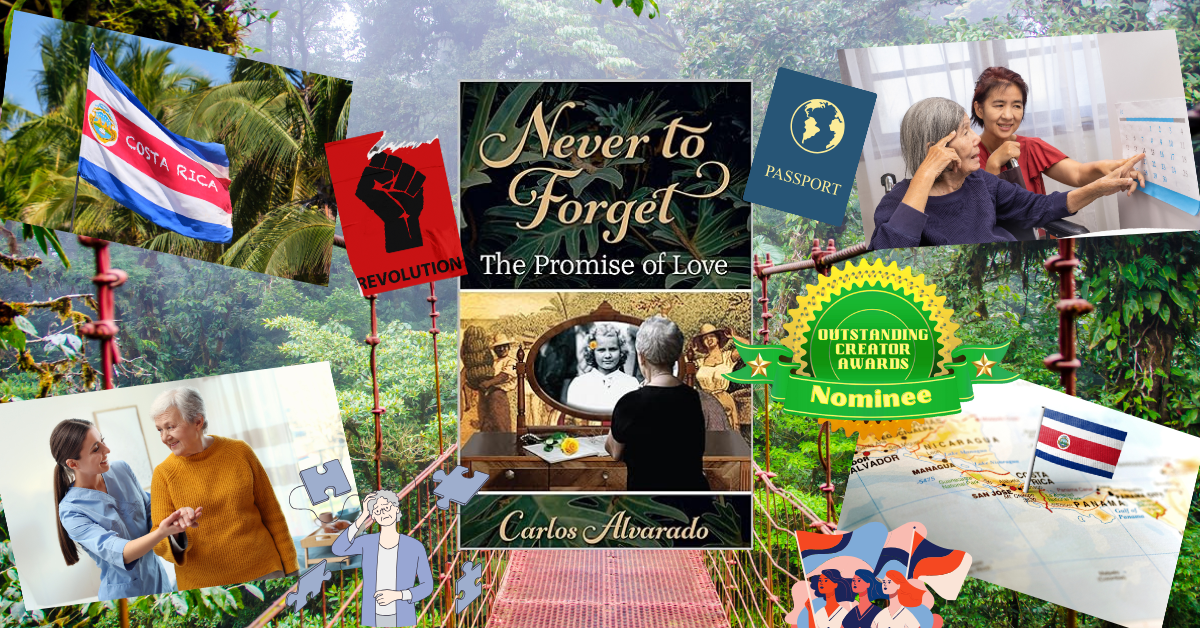
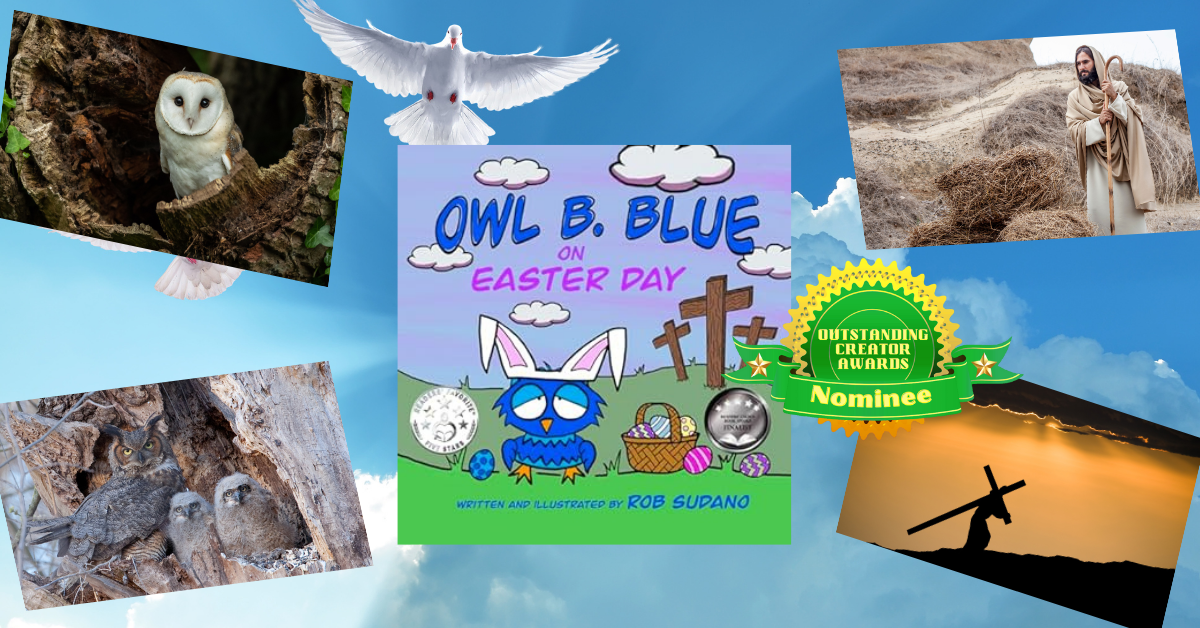
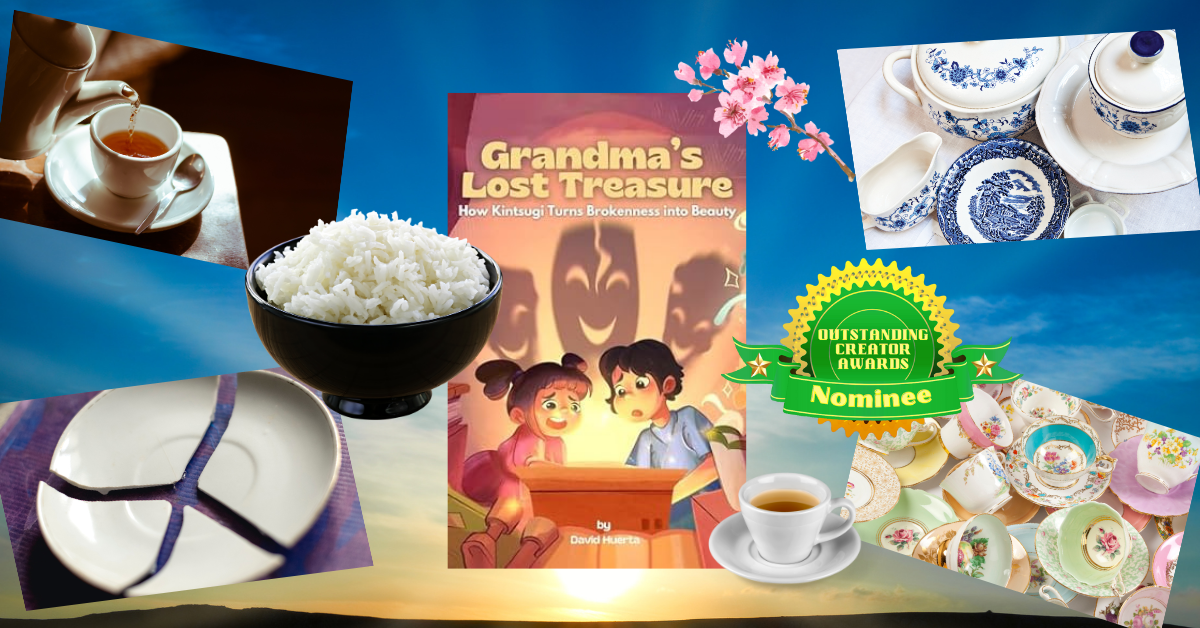
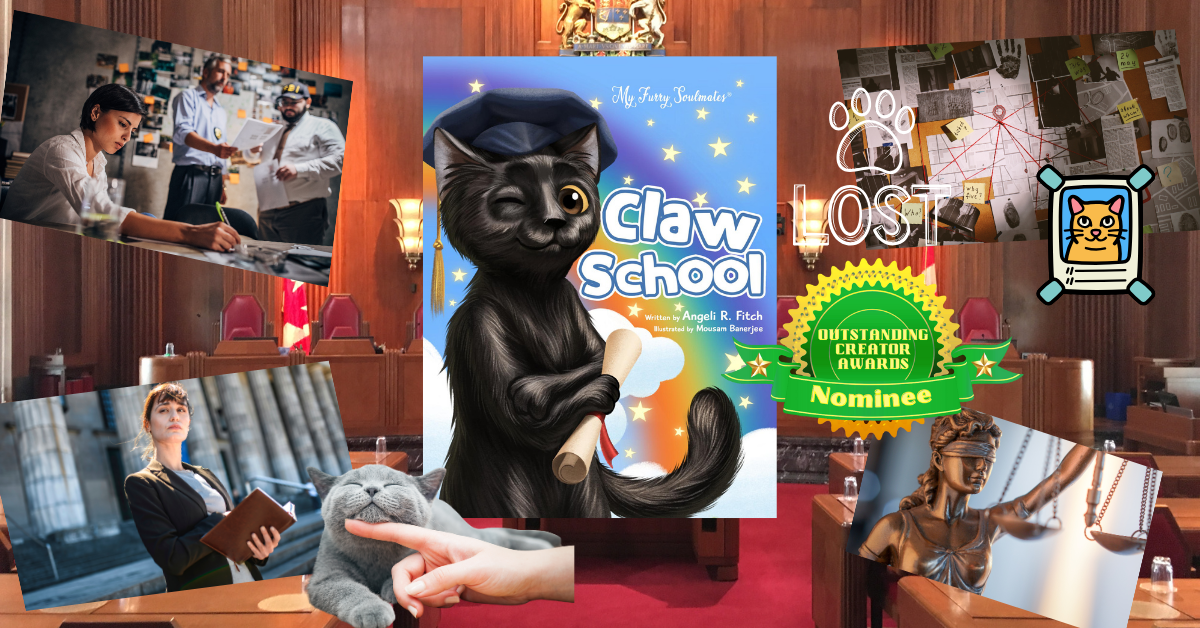
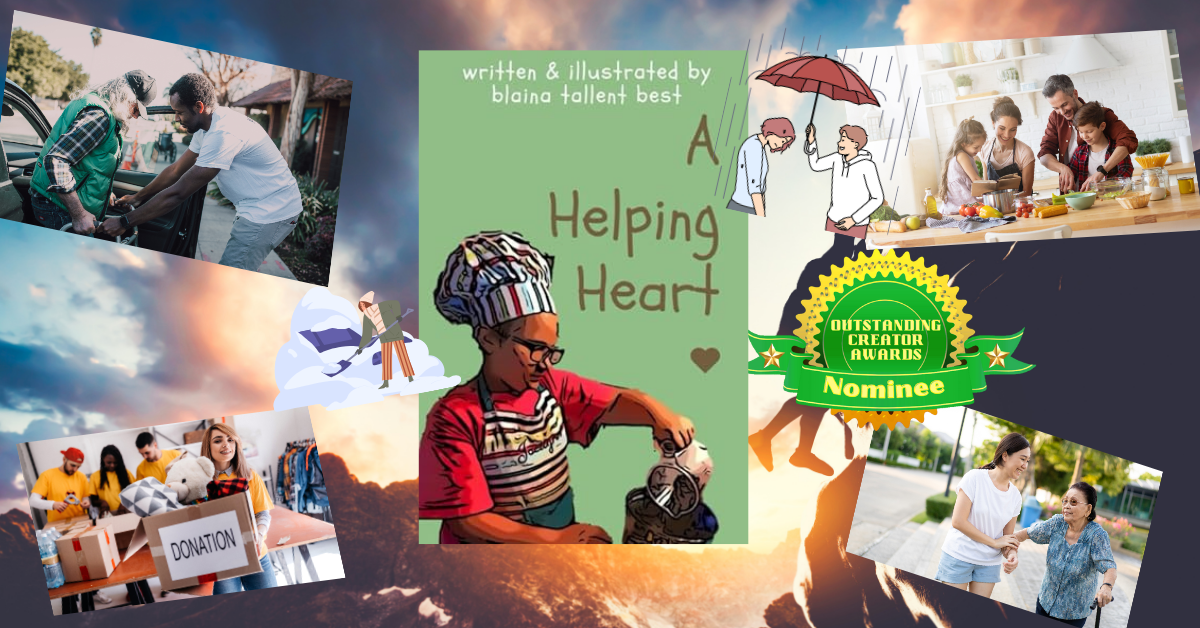

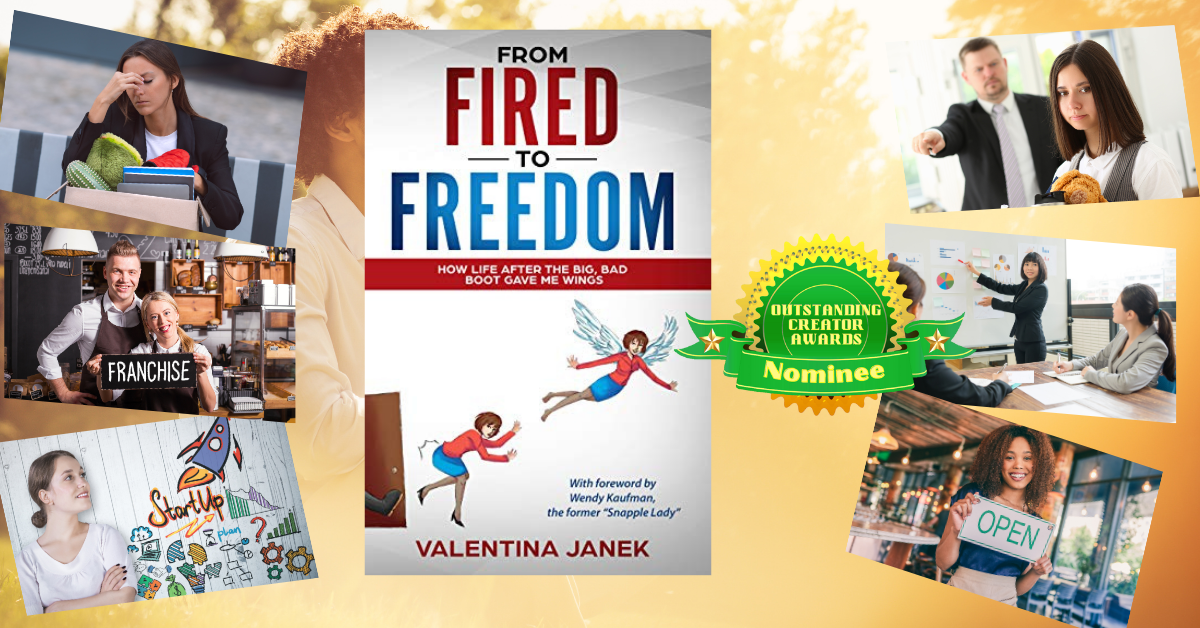
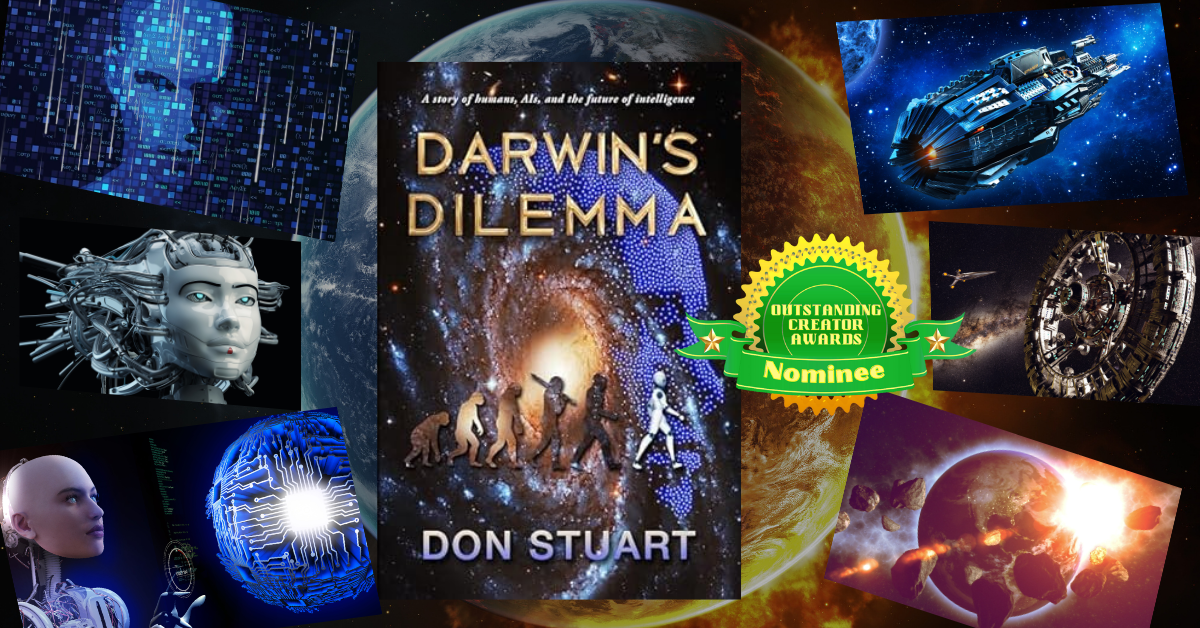

 RSS Feed
RSS Feed